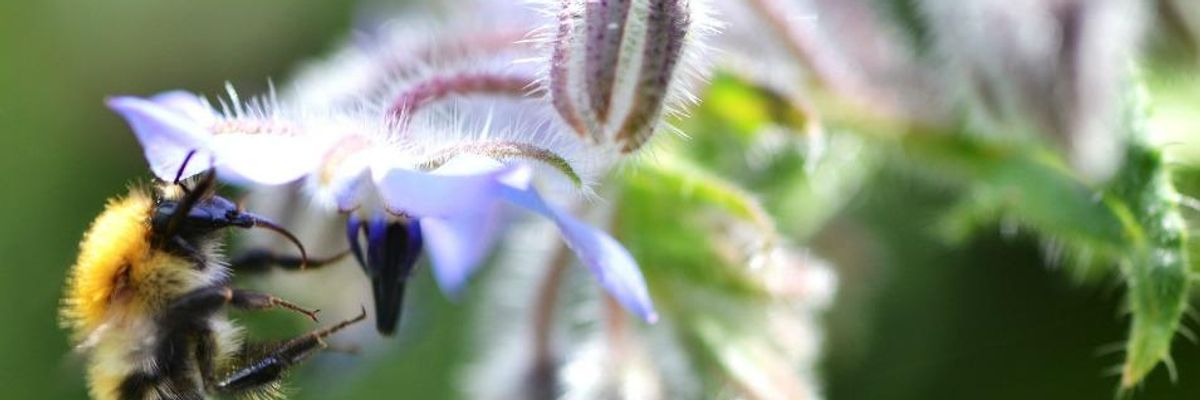A widely used class of insecticides poses a threat on par with that of DDT and is harming ecosystems worldwide, a global team of scientists finds.
Their damning analysis based on 800 peer-reviewed reports, the Worldwide Integrated Assessment of the Impact of Systemic Pesticides on Biodiversity and Ecosystems (WIA), puts a spotlight on neonicotinoids, or "neonics," whose use they say poses a threat to global biodiversity.
In addition to "clear evidence" that neonics pose threats to bees and other pollinators -- a point many environmental groups have stressed -- the WIA analysis found that the most affected group was terrestrial invertebrates like earthworms, which are exposed to varying levels of the systemic pesticides through multiple pathways, like the soil, the plant itself, and water.
The toxic reach of the neonics goes beyond the farmland, the study details, as the soil absorbs the pesticides, dust from the field where treated seeds were drilled can blow into neighboring areas, and polluted groundwater can reach downstream and affect other ecosystems. This multi-pronged exposure in turn affects vertebrate animals like birds and fish.
The analysis also found that the standard ways of measuring the toxicity of the neonics are inadequate as they fail to measure the chronic impacts of the pesticides, which can linger and sometimes build up over years. One of the findings is that long-term exposure at what are classified as low levels can be harmful. Yet acute impacts can be devastating as well, with the analysis noting that acute effects of some neonics can be up to 10,000 times more toxic to bees than DDT.
Continuing their use "is not sustainable," and would mean continued detriment to global biodiversity, the authors find.
"The evidence is very clear," stated Dr. Jean-Marc Bonmatin of The National Center for Scientific Research in France and one of the lead authors of the analysis.
"We are witnessing a threat to the productivity of our natural and farmed environment equivalent to that posed by organophosphates or DDT. Far from protecting food production the use of neonics is threatening the very infrastructure which enables it, imperiling the pollinators, habitat engineers and natural pest controllers at the heart of a functioning ecosystem," Bonmatin continued.
While the European Union last year put a temporary ban on three neonics, the U.S. Environmental Protection Agency, has failed to take such precautionary steps -- a point stressed by organizations that have long-cited the harmful effects of neonics, and who say the new analysis should serve as a wake-up call for decisive, regulatory action.
"This report should be a final wake up call for American regulators who have been slow to respond to the science," stated Emily Marquez, PhD, staff scientist at Pesticide Action Network North America. "The weight of the evidence showing harm to bees and other pollinators should move EPA to restrict neonicotinoids sooner than later. And the same regulatory loopholes that allowed these pesticides to be brought to the market in the first place -- and remain on the shelf -- need to be closed."
"To save our invaluable pollinators," stated Doug Gurian-Sherman, PhD, senior scientist for Center for Food Safety. "EPA, USDA and all Federal agencies must read this report and immediately implement regulatory remedies against the ongoing neonicotinoid disaster."
The findings of the study will be published in the coming weeks in the journal Environment Science and Pollution Research, and are being presented starting Monday in Manila and Brussels.

